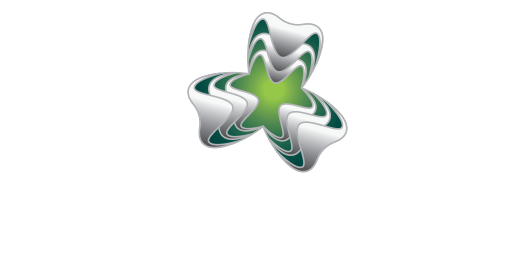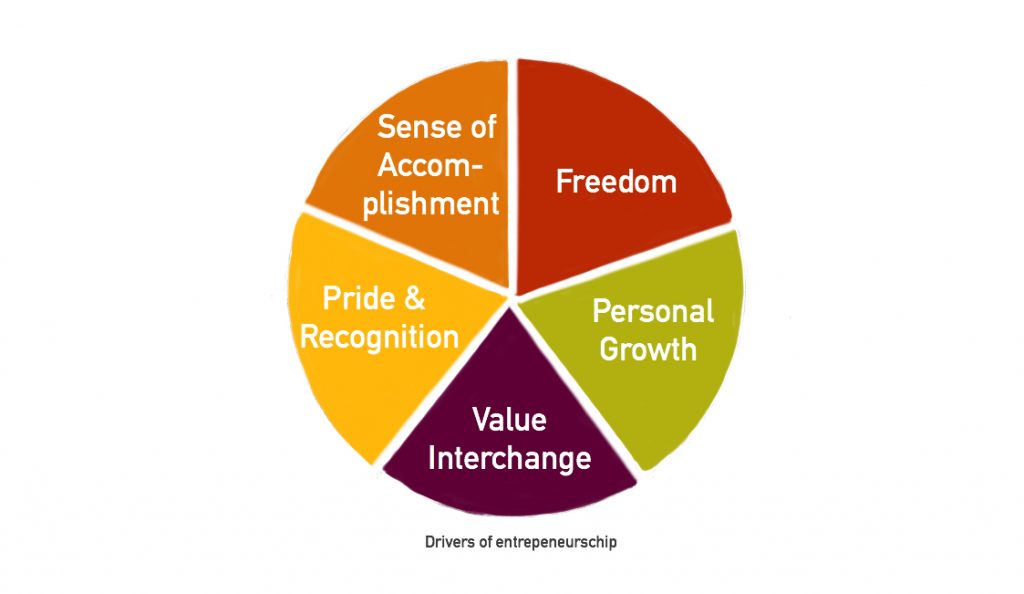Why real collaboration in organizations is impossible
People are made to connect, to be together and to collaborate. It is in the togetherness where we really experience who we are. In relationships we experience the value we bring as a person. Through this experience we can connect and emerge to our full potential.
The dream is that when people are truly collaborating, they stimulate each other to be creative as well as vulnerable, and do not have the tendency to hold back towards each other. In this way fast and intense learning takes place resulting in many and relevant ideas to implement.
If you would characterise yourself as an individualist, soloist or ‘einzelganger’, please bare with me. This is not about considering yourself to be more of an individualist or teamworker, or vice versa. Both are valuable and needed.
But, if people are made to collaborate:
Why is collaboration so complicated?
This is a question with many possible answers. Power in organisations is an important factor. Power here means that some people, implicit or explicit, can ordain the fate of other people in the organisation. The more power, the more written and unwritten rules, the expectations to live up to. It does not matter here if these expectations are really there or not. It is about the power and expectations that are experienced by the people in the organisation and the resulting behaviour.
To belong or to ‘die’
Sometimes we can understand the longing of people to belong somewhere through the parallel of herd animals. Compliance to the rules of the herd determine if you are part of it or not. A matter of life and death, since the herd provides the safety required to survive. A cast-out is an easy prey. So it’s a matter of primal instincts. At the same time, a strategy to survive is a Defensive strategy.
Being part of something at work starts when applying for a new job and being hired for a job according to the job description. The contract is agreed saying you will receive wages in return for your dedication to the company. A real-life reality. Life or ‘death’.
As a consequence, you will start doing what is expected from you, no matter if the expectation is explicit or implicit. This contract just signed can easily become an agreement with a perverse incentive towards defensive behaviour. The sad thing is that we feel it is a logical matter as well. But even when something sounds logical – that does not mean that it is the right thing to do…
[themify_icon icon_color=”#999999″ style=”large” icon=”fa-quote-left”]But even when something sounds logical ,
that does not mean that it is the right thing to do….[themify_icon icon_color=”#999999″ style=”large” icon=”fa-quote-right”]
To the contrary
You might say: ‘But this is not how I experience my work!’.
Okay! (and congratulations!)
At the same time you can imagine for yourself if not for others, that there is some tension going on if you would think about loosing your job and income. It is not a neutral subject.
Do you recognize that people in organizations are keeping their mouth shut towards persons in ‘higher positions’ while in fact they may have an important contribution to make?
Do you know people that are great at complaining but are not contributing anything substantial?
And how does what you do at work contribute to what you feel is really important in this world? In fact, what is réally important for you? Is the work you are doing nowadays your work of choice or did you just happen to slide in it from one job to the next, and it is just now how ‘the world is turning’?
While probably you have recognised some of the points just mentioned, at the same time you may have understood that not all decisions nor behaviour of people are conscious choices. In fact, researchers have found that approximately 90-95% of our daily choices are taking place on sub-conscious level. Yes, this also applies to your choices. Yes, that also applies to my choices.
So if you don’t make truly conscious efforts to engage in what drives you and makes you happy, it is easy to fall back to avoidance of discomfort, doing what is expected from you, keeping the ‘status quo’: the Defensive strategy.
Belonging somewhere or ‘Live’
Let’s go back to the parallel of the herd animals. Is that how it works for us, human beings? Well, people are not animals ( You knew that already 😉 ). Let’s suppose I work for an organisation where, on a conscious or sub-conscious level I am doing my best to comply with the rules and culture of the organisation. To which extent does this limit my freedom to work and deliver value which is coherent with who I am and there fore how I experience myself as valuable? And what does ‘valuable’ mean in this context?
Now this is exactly where we humans distinct ourselves from animals. People are always looking for meaning. People want to be of meaning and get a sense of satisfaction, of accomplishment out of the act of being meaningful for others. Value interchange is taking place based on a relationship of equality and there for not in a relationship of power.
In such relationships, freedom and room for authenticity is being experienced. In this type of relationships a professional is noticeably seen and appreciated for the value he or she creates. This very same professional is very much aware of his or her qualities. He or she will show these qualities without timidity and will deploy these qualities (por)actively. In such a case we can spek of a proactive of Life-strategy, which is very different when comparing to the Defensive strategy.
Personal development as a ‘primary term’ of employment
Current and upcoming generations are valueing gaining personal status through money and possessions like a house and the lease car less than previous generations [i]. More than other generations they are explicitly looking for self-fulfilment and personal growth. Organisations offering opportunities of being challenged and of personal development are attractive companies for them.
When, dictated by the balance of power in an organisation, the need to comply to (internal) expectations is an important given, it will simultaneously hamper development. I believe it will hamper the development and possible growth of the organisation as well as the employees’. Since: where is the ‘wanting’ that transcends the ‘needing/requiring’?
Drivers for ‘wanting’ and internal entrepeneurship
Through this desire to experience oneself as valuable, there are a number of factors for people to start ‘wanting’ something: To become the entrepreneur of their own potential. Institutes like The Economist-Intellingence Unit [ii], the Enterprise Research Centre [iii] but also the RABO bank [iv] have performed research with regards to the drivers of entrepeneurship. Although the terminology used in the research papers is somewhat different, they boil down to the following personal drivers of entrepeneurship:
In different layers of an organisation, these drivers have a special meaning. The layers distinguished here are the layer of the individual professional, the layer of teamwraking and the layer of the organisation/leadership.
The ‘Sense of Accomplishment’ is know in organisations as the Vision and Mission. ‘Freedom’ in an organisation represents the extent to which the leadership empowers people in the organisation to take decisions independently. For each of these 5 drivers you will be able to identify roles and departments in organisations that have an important responsibility to bring and keep that driver to life.
On each layer in the organisation, a different type of dynamic is being served:
- Individual : Increase the impact of professional craftsmanship
- Team : Embracing diversity and mutual unity
- Organisation : Distinguishing culture of change and innovation
When professionals are proactively increasing the impact of their craftmanschip where at the same time we teach teams to take a positive stance towards diversity, this will result in a culture of change and renewal on organisational level. As long as the organisation delivers value, this culture will serve the organisation’s clients as well as the organisation’s continuity.
Fractal Entrepeneurship in Organisations ©
I have called this model with the 3 layers and the 5 drivers of entrepeneurship, which reappear on a smaller scale in teams and individual professionals, ‘Fractal Entrepeneurship in Organisations‘ © [v].
How could you use this?
For starters, do not take this list to your manager of (management)team in order to tell them what should change. Before you know it, you could be entangled in an instrumental or methodical approach of which you know it will not take you to a durable change. Because if the list tells you you ‘have to’ (comply!), what about the ‘wanting to’?
[themify_icon icon_color=”#999999″ style=”large” icon=”fa-quote-left”]Because if the list tells you you ‘have to’ (comply!),
what about the ‘wanting to’?[themify_icon icon_color=”#999999″ style=”large” icon=”fa-quote-right”]
A useful way to use Fractal Entrepeneurship in Organisations is to explore the 5 drivers of entrepeneurship on each of the layers together. In this way you will find out what could be done to increase the internal entrepeneurship in the organisation. During this exploration, take on each layer the perspective of the professional. What doe he or she need there?
With that as a starting point, it is not so complicated to make the first steps and start ‘travelling’ to a changed future.
Through this inquiry an understanding will emerge of what is required to provide the space for the craftsmanship in your organisation, through which professionals will experience their value and self-worth on a daily basis. Additionally, the organisation as well as her clients will profit from the enlarged internal entrepeneurship.
Why real collaboration in organisations is impossible
Real collaboration in organizations is impossible if we don’t succeed to create an environment where people can be themselves and choose to connect to the organisation because they feel they can make a difference that matters.
Idealistic?
Maybe. I have already seen it happening. If we find ways where people in organisations can connect through making meaningful contributions, I’m convinced that what may seem as a tough job will be a fun job!
The autor is the founder and owner of Meulenkamp & Zo and works as a team- and organisational change coach to the benefit of organisations that wish to further develop on themes like ‘Being AGILE/LEAN’, Learning Organisation, Mandate on the Workfloor and Sustainable Employment.
This article is published simultaneously on LinkedIn.
References:
[i] Research on Rewards of the NRC and the Vlerick Business School, January 28, 2015
[ii] Research report The Economist Intelligence Unit, ‘Helping entrepreneurs flourish rethinking the drivers of entrepreneurship’
[iii] Rapid Evidence Paper, Enterprise Research Centre, ‘Understanding Motivations for Entrepeneurship’ https://www.enterpriseresearch.ac.uk/wp-content/uploads/2015/02/Understanding-Motivations-for-Entrepreneurship-Rapid-evidence-assessment-paper..pdf
[iv] Research GFH commissioned by the RABO bank on drivers of entrepeneurship
[v] ‘Fractal Entrepeneurship in Organisations’ is een © copyrighted model of Meulenkamp & Zo
Photographic materials: Playing boys (Aman Shrivastava – Unsplash.com), Herd of horses (Alex Blajan – Unsplash.com), Figure: Drivers of Entrepeneurship (Meulenkamp & Zo), Broccoli Fractal (Flickr/Tin.G)





